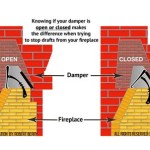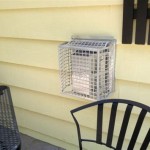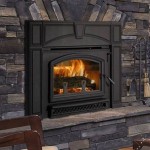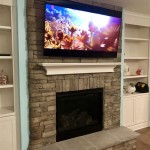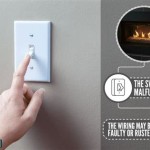Do Electric Fireplaces Save Money On Bills? A Comprehensive Analysis
The question of whether electric fireplaces contribute to cost savings on utility bills is multifaceted and requires a detailed examination of various factors. These factors encompass the efficiency of electric fireplaces, their usage patterns, comparison with traditional heating methods, and the overall energy consumption within a household. A comprehensive understanding of these elements is crucial for accurately assessing the potential for financial benefits accruing from the use of electric fireplaces.
Electric fireplaces operate on the principle of converting electrical energy into heat. They typically employ heating coils or infrared technology to generate warmth, which is then circulated into the room. The efficiency of this conversion is a primary determinant of their cost-effectiveness. A highly efficient electric fireplace will convert a greater proportion of electrical energy into usable heat, minimizing energy waste and reducing electricity consumption. Conversely, a less efficient model will consume more electricity to produce the same amount of heat, leading to higher energy bills.
The manner in which an electric fireplace is used significantly impacts its potential for cost savings. If used as a primary heating source for an entire home, the energy consumption could be substantial, potentially negating any cost advantages. However, if utilized for supplemental heating in specific rooms, allowing for a reduction in the overall thermostat setting of the central heating system, it can lead to noticeable savings. Furthermore, the frequency and duration of use play a critical role. Infrequent, short-term use will naturally result in lower energy consumption compared to continuous, prolonged operation.
The perceived aesthetics and ambiance of electric fireplaces often contribute to their popularity. Many models are designed to mimic the appearance of traditional wood-burning fireplaces, offering a visual appeal without the associated mess and maintenance. This aesthetic factor can influence usage patterns, with some individuals using electric fireplaces more frequently for their ambiance than for their primary heating function. In such cases, the cost-effectiveness of the unit should be evaluated in terms of its aesthetic value as well as its contribution to heating.
Understanding the Energy Efficiency of Electric Fireplaces
The energy efficiency of an electric fireplace is typically expressed as a percentage, indicating the proportion of electrical energy converted into heat. Higher efficiency ratings signify a greater conversion rate and lower energy consumption. It is important to note that electric fireplaces are generally considered to be highly efficient, often approaching 100% efficiency in converting electricity to heat. This contrasts with traditional wood-burning fireplaces, which are notoriously inefficient due to heat loss through the chimney.
However, the overall cost-effectiveness is not solely determined by efficiency. The wattage of the electric fireplace is also a critical factor. A higher wattage unit will consume more electricity per unit of time, even if it is highly efficient. Therefore, it is essential to consider both the efficiency rating and the wattage when assessing the potential energy consumption and associated costs. The size of the room to be heated should also be taken into consideration when selecting an electric fireplace with an appropriate wattage.
Some electric fireplaces are equipped with features designed to enhance energy efficiency, such as adjustable thermostat settings, timers, and zone heating capabilities. These features allow users to precisely control the amount of heat generated and the duration of operation, optimizing energy consumption and minimizing waste. For instance, a timer can be set to automatically turn off the fireplace after a specified period, preventing unnecessary energy use. Zone heating allows for heating only the occupied areas of a home, rather than the entire structure, potentially leading to significant energy savings.
The initial cost of an electric fireplace should also be considered in the overall cost analysis. While electric fireplaces generally have lower upfront costs compared to traditional fireplaces, the long-term operating costs can vary depending on energy consumption and usage patterns. A comprehensive assessment should include both the initial purchase price and the projected energy costs over the lifespan of the unit.
Comparing Electric Fireplaces with Traditional Heating Systems
The cost-effectiveness of electric fireplaces is often evaluated in comparison to traditional heating systems, such as natural gas furnaces, propane heaters, and oil-based heating systems. Each of these heating methods has its own set of advantages and disadvantages in terms of energy efficiency, fuel costs, and environmental impact. A direct comparison is necessary to determine the relative cost savings or expenses associated with using an electric fireplace.
Natural gas furnaces are generally considered to be a relatively cost-effective heating solution, particularly in regions where natural gas prices are low. However, the efficiency of natural gas furnaces can vary depending on the age and maintenance of the unit. Older furnaces may have lower efficiency ratings compared to newer, more advanced models. Propane heaters, on the other hand, tend to be more expensive to operate than natural gas furnaces, as propane prices are typically higher.
Oil-based heating systems are also subject to fluctuations in fuel prices, which can significantly impact operating costs. Additionally, oil-based heating systems often require regular maintenance, including oil tank inspections and filter replacements, which can contribute to overall expenses. Electric fireplaces offer the advantage of avoiding the need for fuel storage, fuel delivery, and associated maintenance, potentially simplifying the heating process and reducing certain costs.
The use of electric fireplaces as supplemental heating can also contribute to cost savings when used in conjunction with traditional heating systems. By using an electric fireplace to heat a specific room, the thermostat for the central heating system can be lowered, reducing overall energy consumption. This approach can be particularly effective in homes with multiple zones or rooms that are not consistently occupied. The key is to strategically use the electric fireplace to offset the energy demand of the central heating system.
Evaluating Usage Patterns and Energy Consumption
Accurate evaluation of usage patterns and energy consumption is essential for determining the actual cost savings associated with electric fireplaces. This involves tracking the frequency and duration of use, as well as monitoring the energy consumption of the unit. Energy consumption can be assessed by consulting the wattage rating of the electric fireplace and calculating the cost based on the local electricity rates.
It is also important to consider the specific features and settings used on the electric fireplace. For instance, some models have adjustable heat settings, allowing users to select a lower heat output to reduce energy consumption. Similarly, the use of timers and zone heating capabilities can significantly impact the overall energy consumption. Regular monitoring of energy consumption can help users identify opportunities to optimize usage patterns and minimize costs.
The insulation of the room in which the electric fireplace is used also plays a significant role in its cost-effectiveness. A well-insulated room will retain heat more effectively, reducing the amount of energy required to maintain a comfortable temperature. Conversely, a poorly insulated room will lose heat rapidly, requiring the electric fireplace to operate more frequently and consume more energy.
Finally, it's important to regularly review electricity bills to identify any changes in energy consumption patterns. This review can help to determine whether the use of an electric fireplace is contributing to cost savings or increasing energy expenses. If energy consumption is increasing, it may be necessary to adjust usage patterns or consider alternative heating strategies. By proactively monitoring energy consumption and adjusting usage accordingly, individuals can maximize the potential for cost savings associated with electric fireplaces.

How To Save Money On Heating With Electric Fireplaces Twin Star Home

How Much Does It Cost To Run Electric Fireplace In 2025

ᑕ❶ᑐ How Much Does It Cost To Run An Electric Fireplace

Can My Fireplace Save Money On Electric Bill Barineau Heating Air

Can Using A Fireplace Save You Money On Heating Bills Wm Buffington Company

ᑕ❶ᑐ How Much Does It Cost To Run An Electric Fireplace

ᑕ❶ᑐ How Much Does It Cost To Run An Electric Fireplace

Will An Electric Fireplace Add A Lot To Your Bill

ᑕ❶ᑐ How Much Does It Cost To Run An Electric Fireplace

Are Electric Fireplaces Expensive To Operate Dimplex
Related Posts

